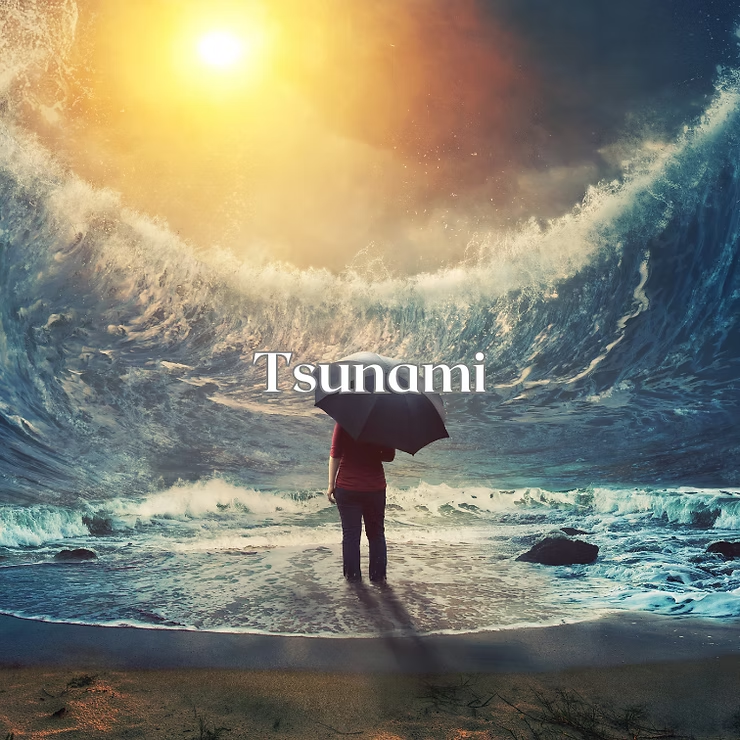Introduction
Tsunamis are among the most powerful natural disasters on Earth, capable of wiping out entire coastal communities within minutes. These massive waves are usually caused by underwater earthquakes, volcanic eruptions, or landslides that displace large volumes of water. Understanding how tsunamis form, recognizing warning signs, and preparing in advance are critical for survival. This article explores the science of tsunamis, their devastating impacts, ways to stay safe, and lessons from historical events.
Key Takeaways
- Tsunamis are triggered by underwater earthquakes, volcanic eruptions, or landslides.
- They form when displaced water generates fast-moving waves across oceans.
- Warning systems and natural signs can provide life-saving alerts.
- Immediate evacuation to higher ground is the safest response.
- Preparedness and community support are essential for recovery.
The Basics of Tsunamis
What Causes a Tsunami?
Most tsunamis result from underwater earthquakes, though volcanic eruptions, landslides, and even meteorite impacts can also trigger them. When the ocean floor shifts suddenly, massive amounts of water are displaced, creating waves that travel at speeds of up to 500 miles per hour. Not all earthquakes produce tsunamis—only those occurring beneath or near large bodies of water with enough force to shift the seabed significantly.
How Do Tsunamis Form?
A tsunami begins with a sudden disturbance in the water. Like ripples from a stone dropped in a pond, waves radiate outward from the point of impact. In deep water, these waves may pass unnoticed, but as they reach shallow coastlines, they slow down and build into towering walls of water. Depending on the magnitude of the triggering event and its proximity to shore, these waves can overwhelm coastal areas with devastating force.
The Destructive Power of Tsunamis
Tsunamis can flatten buildings, uproot trees, and reshape coastlines in minutes. The sheer force of water carries debris inland, destroying infrastructure and lives in its path. The impact lingers for years as survivors rebuild homes, communities, and economies. Because of their scale and unpredictability, tsunamis are disasters that demand respect and preparation.
Recognizing Tsunami Warnings
Tsunami Warning Systems
Global warning networks monitor seismic activity and ocean conditions to issue alerts. Buoys and sensors detect shifts in water pressure, sending early warnings to authorities. Once activated, these warnings allow communities valuable time to evacuate. Testing and maintaining these systems is vital to ensure reliability when disaster strikes.
Natural Signs
- Unusual ocean behavior, such as sudden withdrawal or rise in sea level.
- A loud rumbling or roaring sound from the sea.
- Strong coastal earthquakes that may signal incoming waves.
What to Do When a Warning is Issued
- Listen carefully to official alerts and follow instructions.
- Evacuate to higher ground immediately—do not wait to confirm danger.
- Avoid beaches, harbors, and river mouths until authorities declare safety.
Surviving a Tsunami
Preparation
- Create a household emergency plan with evacuation routes.
- Assemble a kit with food, water, medical supplies, and essentials.
- Secure heavy furniture and consider tsunami-resistant reinforcements for buildings.
Evacuation and Safety Tips
- Move quickly to higher ground without delay or hesitation.
- Stay away from low-lying areas and rivers that connect to the sea.
- Remain in safe zones until officials confirm the danger has passed.
- Offer help to others if it is safe to do so.
The Aftermath of a Tsunami
Assessing the Damage
Damage assessments are critical for recovery, from collapsed buildings to disrupted infrastructure. Surveys and inspections guide rescue operations, insurance claims, and rebuilding strategies.
Rebuilding Communities
Restoration is a long-term effort involving homes, schools, hospitals, and emotional healing. Community participation, counseling services, and coordinated government aid are essential for rebuilding lives.
Supporting Victims
Relief organizations provide food, shelter, and medical care. Donations, volunteering, and raising awareness ensure survivors receive immediate and long-term assistance.
Famous Tsunamis in History
- 2004 Indian Ocean Tsunami: Caused by a 9.1 earthquake, killing about 230,000 people across multiple nations.
- 2011 Tohoku Tsunami: Triggered by a 9.0 earthquake in Japan, with waves reaching 40 meters and affecting communities as far as California and Chile.
- 1883 Krakatoa Tsunami: Resulted from a volcanic eruption in Indonesia, producing waves up to 30 meters high and devastating nearby coastal settlements.
Conclusion
Tsunamis are deadly reminders of nature’s power. While we cannot prevent them, knowledge, preparation, and swift action can save lives. Recognizing warning signs, respecting alerts, and learning from history equip us to minimize future risks. By w

